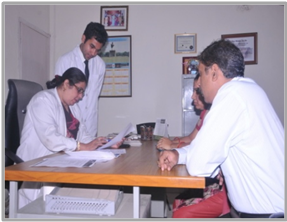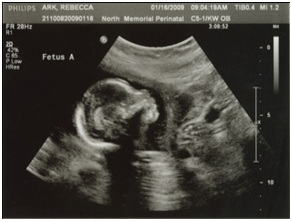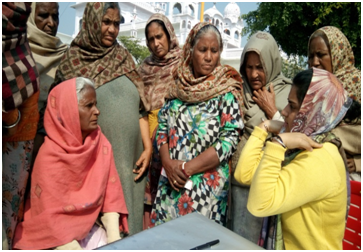Prenatal Screening Tools for Management of Congenital Malformations
Congenital anomalies/Genetic Disorders are important causes of infant and childhood mortality, chronic illnesses and disabilities. As per WHO, 3,03,000 newborns are estimated to die within 4 weeks of birth every year, worldwide, due to congenital anomalies. The prevalence in India is 6-7%, translating to 1.7 million birth defects annually. The common congenital anomalies are heart defects, neural tube defects and Down syndrome.
Prenatal screening is a non-invasive tool for identifying structural & functional abnormalities in unborn fetus during early pregnancy. The pre-birth evaluation of any malformation provides the scope to enable timely medical or surgical treatment of condition before or after birth as well as in case of untreatable condition, making use of genetic counseling of the affected parents to take informed decision. Presently, prenatal screening testing is not much practiced in developing nations, including India. Hence, PSCST has joined hand with Civil Hospital, Mohali and Govt. Medical College & Hospital-32 for introducing the prevention based prenatal screening for the first time in the health care system of the state with the support of Department of Science and Technology, Govt. of India. The Prenatal Screening Program has been initiated for Pregnant Women of District Mohali, wherein simple blood test is performed in early pregnancy to know if unborn baby is at risk of congenital malformation.
About 2000 pregnant SC/low socio-economic women of District Mohali in their first & second trimester of pregnancy have been enrolled and counseled for biochemical profiling for dual & triple tests and ultrasonography for identifying congenital malformations (chromosomal disorders, Neural Tube Defects). Based on these, high risk pregnancies have been identified and genetically counseled for advance confirmatory tests, implication thereof and options available for management. Awareness programmes for pregnant females and health extension staff including Medical Officers, ASHA workers, ANMs of the District are being conducted regularly.


Bone Health Initiative
Osteoporosis is a skeletal disorder characterized by low bone strength that leads to an increased risk of fragility & fractures. It is a major public health problem and is a progressive metabolic bone disorder mainly affecting elderly population especially the ageing women. The women at the age group of 30-60 years specially from lower economic strata are more prone due to inadequate nutrition in terms of calcium & vitamin D, which tends to get depleted all the more at the time of pregnancy, breastfeeding and menopause. However, though the condition is manageable through nutritional and minor lifestyle modulation, the information is lacking in masses.
As systematic data on the incidence of osteoporosis, related osteoporotic fractures & their complications in the state is lacking, realizing the need thereof, the council carried out the project in collaboration with Department of Sports Medicine & Physiotherapy, Guru Nanak Dev University with the Department of Science & Technology, Govt. of India. Under this, assessment of prevalence of osteoporosis among 3000 rural & urban women of District Amritsar was carried out through Bone Mineral Density (BMD) measurement using quantitative ultrasound bone densitometer. The analysis revealed 70% women having low bone mass, with 27% women falling in osteopenic and 43% in osteoporatic category. The detailed dietary and life style survey in terms of calcium intake, energy expenditure (physical activity), sunlight exposure, serum vitamin D and parathyroid hormone levels was carried out to assess associated risk factors in target population. The study highlighted 62% of surveyed having low calcium intake; 65% followed sedentary lifestyle while majority suffered from severe hypovitaminosis (severe vitamin deficiency). As osteoporosis is manageable through modulation of associated parameters, high risk women (having low BMD level) were selected (150 nos.) and provided with nutritional & other interventions for 6-9 months. The information gathered post intervention showed promising results as BMD levels of 30% women improved to normal levels, while levels of 69% of women earlier categorized as critically osteoporotic improved to mild osteopenic levels.
The Council adopted 30 villages from 6 districts of the state in collaboration with partner NGOs working in the field of indigenous health care system in these areas and organized Public contact programmes in each village to sensitize rural women and health extension workers on detection & management of osteoporosis in terms of early warning signs and symptoms to detect osteoporosis, adoption of healthy lifestyle, role of nutrition & physical exercise for healthier bones etc. Further District level Workshops were organized for faculty from university, colleges & schools; officers from Departments of Education, Health & Family Welfare, Social Security and Women & Child Development and NGOs to give insights into the prevalence of disease, its diagnostic procedure and available treatment therapies. The programmes followed by BMD camps organized by panel of doctors received overwhelming response. The knowledge material on the subject was also developed and disseminated.


HIGH FLUORIDE ASSESSMENT & MANAGEMENT IN PREGNANT WOMEN
Punjab is the second highest endemic zone for fluoride in the country with 17 districts reported to be fluoride endemic. Fluoride which is a naturally occurring mineral found in ground water paves its way to various domestic water sources viz. tube wells, hand-pumps and open wells in rural areas. The other sources of fluoride include fluoride rich foods viz. fried & junk food/snacks containing high content of rock & black salt, black tea, fluoride fortified canned fruit juices, fluoridinated toothpaste/ mouth rinses, tobacoo / supari etc. Though fluoride is essentially required by human body in smaller dosage for bone mineralization & tooth enamel formation but at higher levels, it results in painful & crippling disorder called fluorosis. The major complications are in the form of dental and muscoskeletal fluorosis affecting children & adults respectively. The pregnant women / expecting mothers are other segment of society critically affected by high fluoride body levels. These high risk fluoride pregnant women may suffer from anemia, preeclampsia, hypothyroidism, oxidative stress etc. which may lead to pregnancy related complications i.e. spontaneous abortion / still birth of baby or birth of low weight / premature / congenitally malformed child / child with low IQ levels. The problem has been reported to be more critical in low socio-economic strata, however the systematic data for the same is lacking in the state of Punjab. Hence, PSCST implemented pilot project on assessment of baseline data on fluoride levels in pregnant SC women of Punjab, consequences of high fluoride levels and their management with the support of Department of Welfare (Directorate of SC/ST), Govt. of Punjab. The project was carried out in fluoride endemic Faridkot district in collaboration with Department of Gynecology, Guru Gobind Singh Medical College & Hospital (GGSMCH), BFUHS, Faridkot.
Analysis of samples from project area (500 nos. as indicated above) revealed 60% of enrolled women having urinary fluoride levels in the range of 2-3 mg/l, while 12% of women had even higher fluoride levels i.e. > 3 mg/l. The water samples collected from adopted rural community showed higher levels of fluoride in domestic water supply from handpumps & canal i.e in the range of 2-3 mg/l as compared to RO treated water supply installed which showed safer fluoride levels which were < 1 mg/l. One-to-one interaction with these women reflected lack of awareness among them on fluorosis, possible fluoride sources, implications of high fluoride on their & expected baby’s health as well as precautions for prevention & management of the same. The high risk fluoride women from hospital were counseled to adopt healthy & nutritional lifestyle viz. adequate intake of calcium, iron, vitamin C & E and anti-oxidants rich diets to repair the damage caused by fluoride & arrest of further disease progression; to avoid fluoride rich foods & consume fluoride free water for drinking & cooking purpose. Further, 8 public contact programmes were organized in adopted SC villages to sensitize women about all the aspects of fluorosis & possible nutritional interventions for its management.







